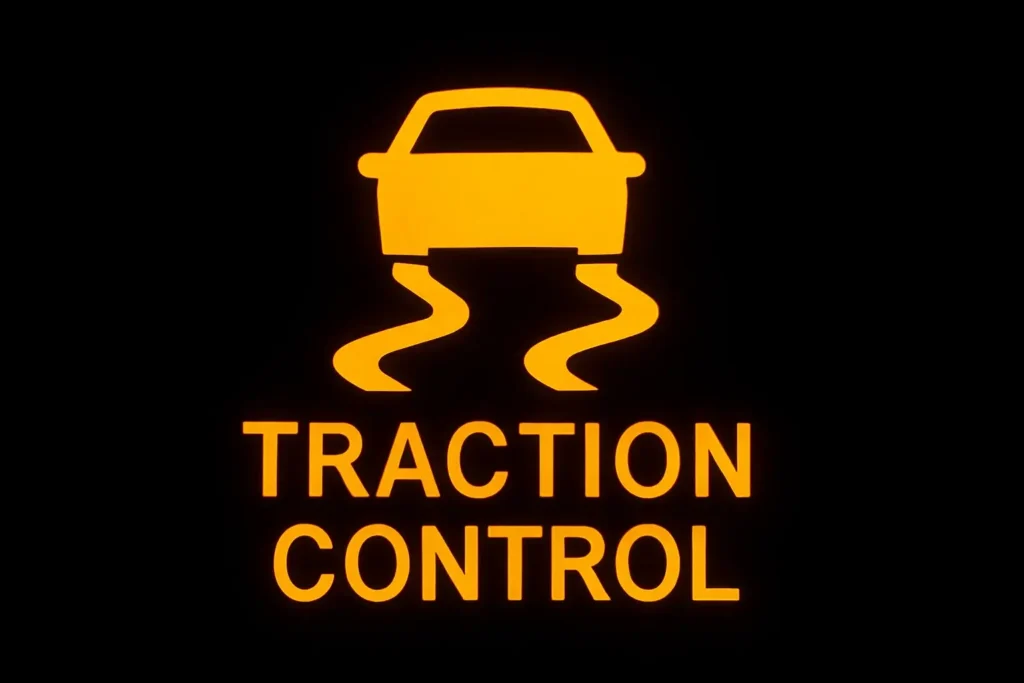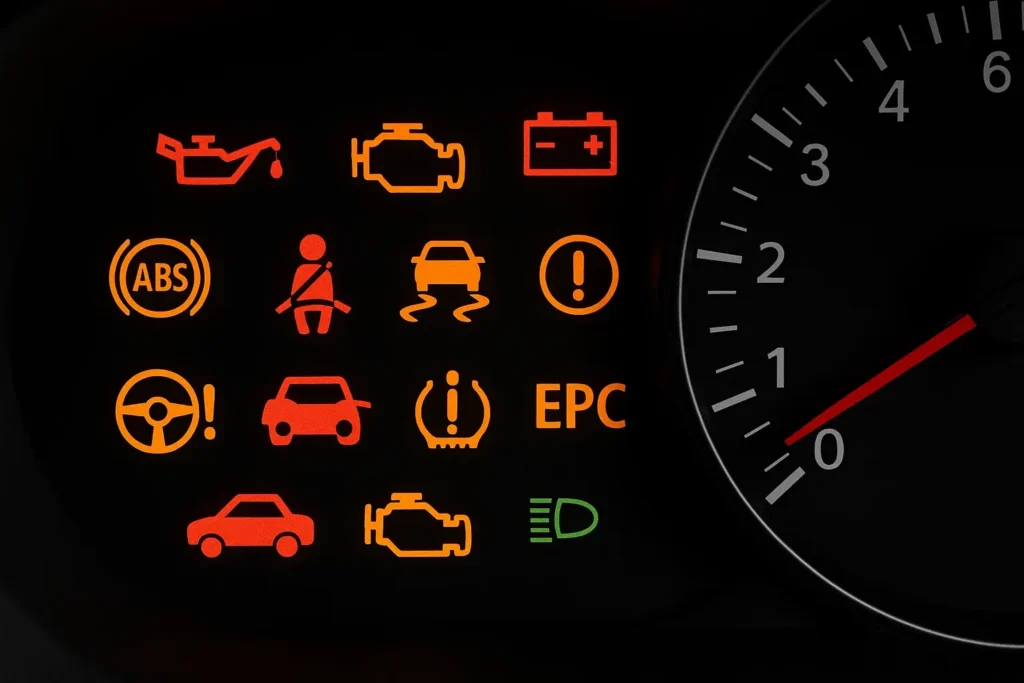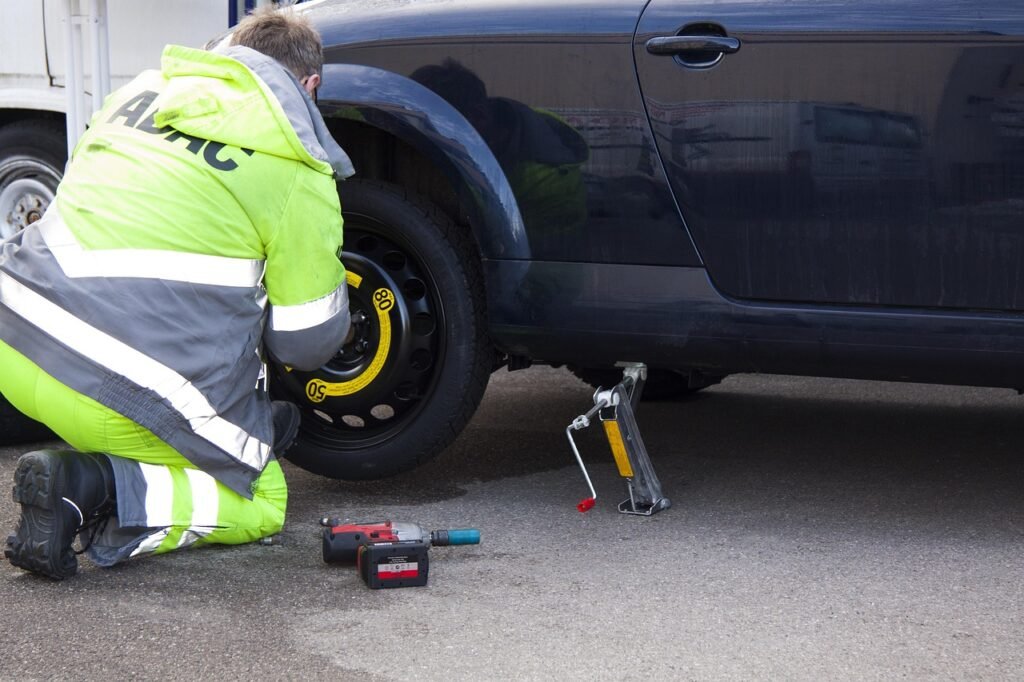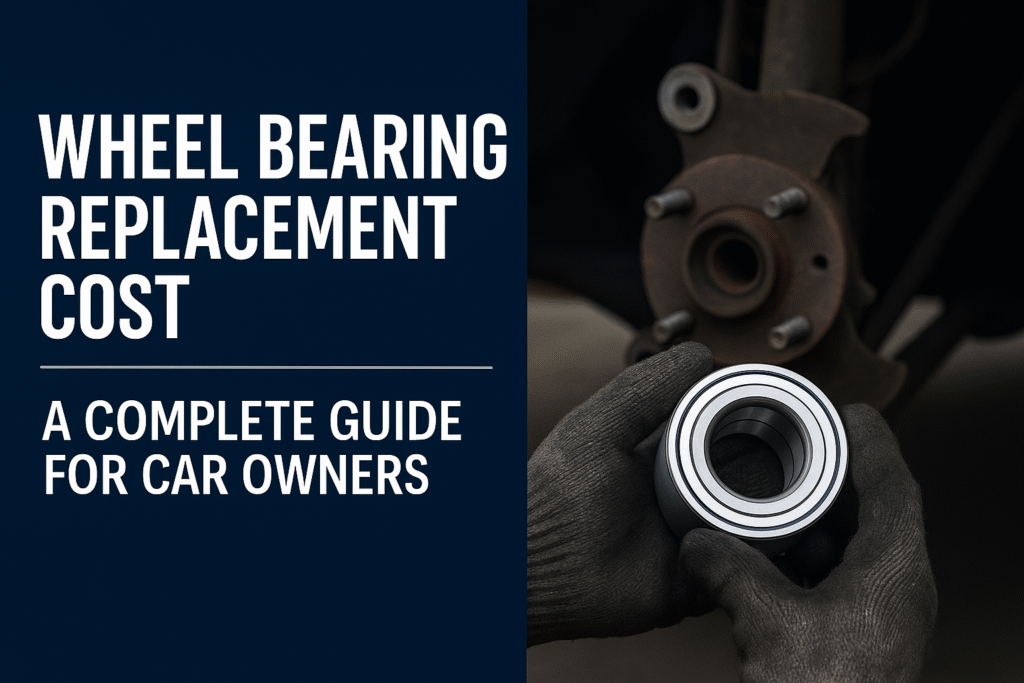Have you ever noticed your traction control light come on while driving? Whether it flashes briefly or stays illuminated, this dashboard warning can be confusing and sometimes concerning. In this guide, we’ll explain what the traction control light means, why it turns on, and what steps you can take to diagnose and resolve the issue.
Understanding this system is crucial to maintaining your car’s safety and drivability especially in poor weather conditions.
What Is the Traction Control Light?
The traction control light is a dashboard indicator that relates to your vehicle’s traction control system (TCS). This light typically appears as a car with squiggly lines underneath or simply reads “TCS” depending on the make and model.

Purpose of the Traction Control System
The traction control system helps your vehicle maintain grip by reducing wheel spin during acceleration. It uses sensors that detect if a wheel is slipping and adjusts engine power or applies braking force to regain traction especially useful in snow, rain, gravel, or icy road conditions.
What It Means When the Traction Control Light Comes On
Flashing or Blinking Light (Normal Operation)
If your traction control light flashes briefly while driving, it typically means the system is working as intended temporarily engaging to prevent wheel slippage.
Example: You accelerate on a wet road, a wheel starts to slip, and the light blinks to show traction control is active.
Solid or Constant Light (Warning)
A steady or persistent traction control light means:
- The system has been manually turned off, or
- There is a malfunction that prevents the system from working properly
In this case, the car may still be drivable, but the loss of traction assistance could increase your risk in poor road conditions.
Interesting read: What Is a Transmission Speed Sensor?
Common Reasons the Traction Control Light Stays On
Understanding the root cause helps you know when to take action:
Slippery Roads
Frequent system activation can make the light come on. If the roads are icy, snowy, or sandy, the system may be working overtime.
Faulty Wheel Speed Sensors
These sensors detect wheel rotation. If one fails, it may send bad data to the traction control system and trigger the warning light.
ABS System Malfunction
Traction control often shares components with your Anti-lock Braking System (ABS). A fault in the ABS can disable traction control as a precaution.
Steering Angle Sensor Issues
The steering angle sensor monitors the direction of your steering. Incorrect readings can confuse the traction system, causing it to shut down.
Low Brake Fluid or Brake System Problems
Traction control relies on proper braking function. Low brake fluid levels can impact sensor readings and system reliability.
Electrical or Software Issues
Corrupted codes, poor wiring connections, or issues with the electronic control module (ECM) can cause the light to stay on.
Traction Control Light vs. ABS and Other Dashboard Lights
TCS Light vs. ABS Light
- TCS Light: Focuses on traction and wheel spin
- ABS Light: Relates to preventing wheels from locking during braking
- Both systems are interconnected; one malfunction can affect the other
TCS OFF Light vs. TCS Warning
- TCS OFF Light: Usually means the driver turned the system off manually
- TCS Warning Light: Indicates a system fault that needs diagnosis
Interesting read: Understand Carburetor Cleaners & its Types
Is It Safe to Drive with the Traction Control Light On?
When It’s Safe
- Roads are dry and you’re aware that traction assistance is unavailable
- You intentionally turned the system off (e.g., stuck in deep snow or mud)
When It’s Unsafe
- Roads are wet, icy, or uneven
- The light is accompanied by other warning lights (e.g., ABS, check engine)
- You’re unsure why the light is on
Important: Driving without traction control increases your risk of losing control, especially in poor weather.
How to Diagnose a Traction Control Issue
Use an OBD-II Scanner
- Plug into your vehicle’s diagnostic port
- Read codes like C1233 (wheel speed sensor failure) or C1210 (steering sensor issue)
Perform a Visual Inspection
- Check for:
- Loose or damaged wiring around wheel hubs
- Brake fluid level
- Tire tread and pressure
- Loose or damaged wiring around wheel hubs
Observe Other Symptoms
- Is the ABS light also on?
- Do you feel a loss in braking power or stability?
- Does the light come on after a bump or turn?
How to Fix a Traction Control Light Issue
Common DIY Fixes
- Top off brake fluid
- Clean or replace wheel speed sensors
- Reset the system with a scan tool
When to Visit a Mechanic
- Faulty ABS module or steering angle sensor
- Wiring or software faults
- Persistent or recurring warning lights after resets
How to Prevent Future Traction Control Problems
Maintain Your Braking System
- Keep brake fluid topped off and change it per manufacturer schedule
- Replace pads and rotors when needed
Monitor Tire Health
- Keep tires inflated and aligned
- Replace worn or uneven tires especially in AWD or 4WD vehicles
Get Sensors Checked Regularly
- Especially after brake work, suspension repairs, or alignment issues
Final Thoughts
The traction control light is more than a dashboard annoyance. It’s a direct signal from your vehicle’s safety system. Whether it’s flashing briefly or staying on persistently, understanding what it means can help you make the right maintenance decisions.
Key takeaways:
- A blinking TCS light usually means the system is working
- A solid light may signal a fault or disablement
- Always investigate, especially if paired with other warning lights
- Don’t drive without traction assistance in hazardous conditions
If you’re unsure, consult a qualified technician or use an OBD2 scanner to get a clearer picture.
FAQs
Is it safe to drive with the traction control light on?
Short answer: it depends. If it flickers during rain or snow, that’s normal it’s doing its job. But if it stays on all the time, it could mean something’s wrong. Your car can still drive, but you might lose grip in tricky conditions.
Why did my traction control light come on out of nowhere?
This can happen due to a bad wheel speed sensor, loose wiring, or even low tire pressure. Sometimes, it's just a glitch in the system. A quick scan at an auto shop can pinpoint the issue.
How do I turn off the traction control light?
In many cars, there's a button to turn the system off manually. But if the light is stuck on because of a fault, you’ll need to fix the problem first. Resetting the system usually requires an OBD-II scanner or a visit to a mechanic.
Can the traction control light come on with the check engine light?
Yes, and when that happens, it often means the issue is more serious. It could be an engine misfire or a sensor failure affecting both systems. Best move? Get it checked out soon.
Will my car fail inspection if the traction control light is on?
In some states or countries, yes. Especially if it's tied to your ABS or check engine system. Always check your local inspection rules to be sure.



